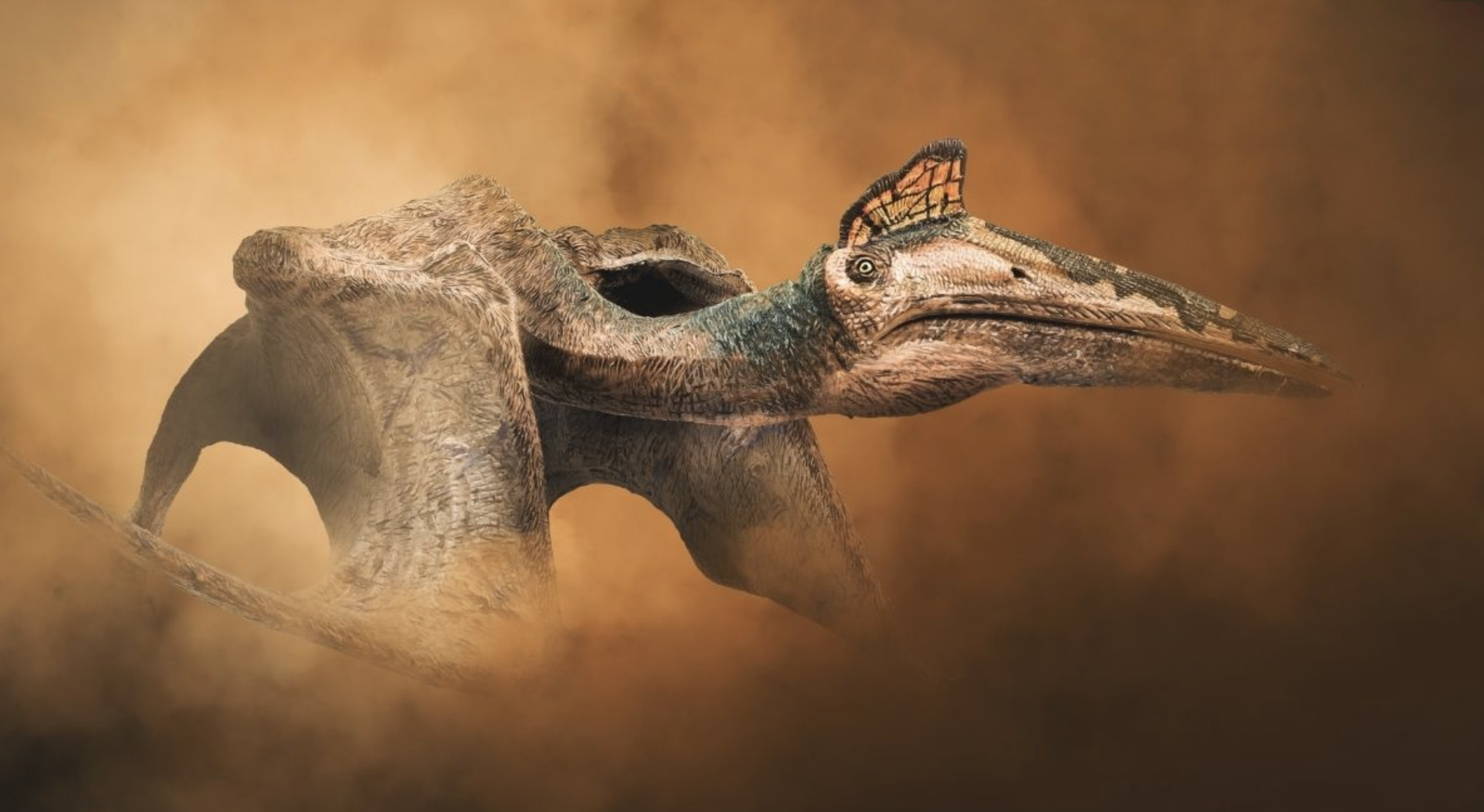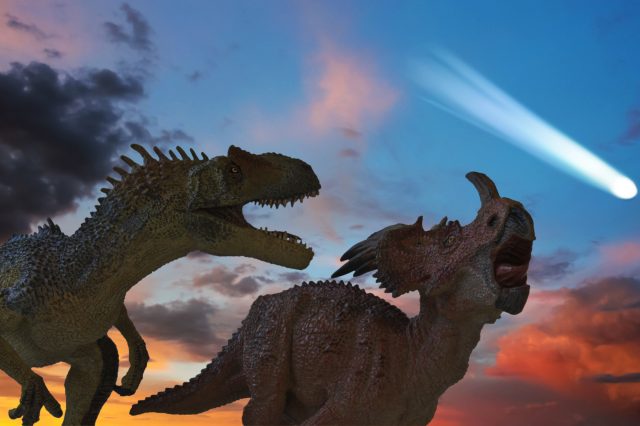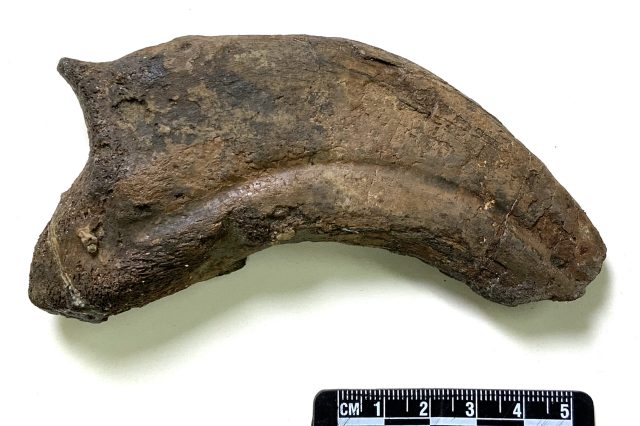Living during the Late Cretaceous period, Quetzalcoatlus northropi could attain a wingspan of up to 11 meters—equivalent to the length of a standard city bus. Initial scientific estimates suggest that this species of pterosaur might have weighed between 90 to 225 kilograms.
Pterosaurs, the first vertebrates to evolve powered flight, ruled the Mesozoic skies long before birds took to the air. They ranged from the size of sparrows to giants like quetzalcoatlus, which stood as tall as a giraffe when on the ground. Yet, despite their impressive history and diversity, significantly less attention has been devoted to understanding their extinction.
Recent discoveries have expanded our understanding of pterosaur diversity at the end of the Cretaceous. Paleontologists initially believed that only the giant azhdarchids, like quetzalcoatlus, were present during this era. However, recent findings have identified rare members of other pterosaur groups in rocks of the same age, indicating that pterosaurs were perhaps more diverse at the end of the Cretaceous than previously appreciated.
Intriguingly, many of these pterosaurs were found in oceanic environments, contrary to the previous belief that most Late Cretaceous pterosaurs lived inland. This suggests that pterosaurs were thriving in diverse habitats rather than dwindling when the extinction event occurred.
One theory suggests that the large body size of many Late Cretaceous pterosaurs, including quetzalcoatlus, might have contributed to their downfall. Larger species were possibly more vulnerable to the dramatic environmental changes caused by the asteroid impact, leading to their extinction.
Fascinating Facts About Quetzalcoatlus
The quetzalcoatlus, an enormous creature that dominated the skies during the Late Cretaceous period, continues to captivate scientists and the general public alike. Here are the top ten facts about this awe-inspiring pterosaur that you need to know.
1. The Largest Flying Animal in History; the Quetzalcoatlus
Quetzalcoatlus, named after the feathered serpent god Quetzalcoatl from Aztec mythology, holds the title of the largest flying animal ever discovered. With an incredible wingspan that reached up to 36 feet, this flying reptile was as wide as a small airplane. Its standing height, equivalent to that of a giraffe, is enough to tower over any human.
2. North American Native
The fossil records of quetzalcoatlus place its habitat in what is now North America during the Maastrichtian age of the Late Cretaceous period, some 70-66 million years ago. It was the last of the pterosaurs, a group of flying reptiles that lived alongside the dinosaurs.
3. The Stork-Like Hunter
Unlike most predators of its time, quetzalcoatlus likely hunted like a modern-day stork or heron, using its long neck and beak to snatch up small animals and fish. This distinct feeding strategy, called ‘terrestrial stalking,’ allowed it to exploit a niche that was relatively unoccupied by other large predators.
4. Not a Dinosaur, but a Pterosaur
Despite its dinosaur-like appearance, quetzalcoatlus was actually a pterosaur, a group of flying reptiles that were closely related to dinosaurs but formed a distinct lineage. Pterosaurs like quetzalcoatlus are the first vertebrates known to have evolved powered flight.
5. Discovery in Texas
The first quetzalcoatlus fossils were discovered in Texas in 1971, within the Big Bend National Park. These remains have since provided crucial insights into the life and behavior of these magnificent creatures.
6. Thin-Walled Bones
Quetzalcoatlus, like other pterosaurs, had hollow, air-filled bones to achieve flight. Despite being thin-walled, these bones were incredibly strong, allowing the animal to withstand the physical demands of flight.
7. Quetzalcoatlus: Flight Speed and Altitude
Given its size, scientists estimate that quetzalcoatlus could have reached speeds of up to 80 miles per hour in flight. It’s also suggested that this creature could ascend to altitudes of over 15,000 feet, comparable to some modern birds.
8. Endothermic Metabolism
Research suggests that quetzalcoatlus, like other pterosaurs, was likely endothermic or warm-blooded. This adaptation would have allowed it to maintain a high level of activity, essential for its long-distance flight capabilities.
9. The Azhdarchid Family
Quetzalcoatlus was a member of the Azhdarchid family of pterosaurs, known for their elongated necks and large sizes. Azhdarchids are considered the most derived and successful group of pterosaurs, dominating the Late Cretaceous skies.
10. Extinction Mystery
Despite their success, quetzalcoatlus and all other pterosaurs met their end during the Cretaceous-Paleogene (K-Pg) extinction event around 66 million years ago. The exact cause of their extinction, whether it was due to the asteroid impact that wiped out the dinosaurs or to other factors, is still a topic of ongoing research. Sixty-six million years ago, an immense asteroid collided with what is now the Yucatan Peninsula, causing one of the worst extinction crises in history. This catastrophe ended the dinosaurs’ reign and claimed the last of the ammonites, mosasaurs, and a variety of other life forms, including the formidable pterosaurs.
The quetzalcoatlus represents a captivating chapter in the history of life on Earth. As we continue to unearth more about this giant of the Cretaceous skies, its story serves as a compelling reminder of the remarkable diversity and adaptability of life in our planet’s past.
Have something to add? Visit Curiosmos on Facebook. Join the discussion in our mobile Telegram group





